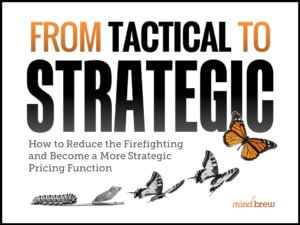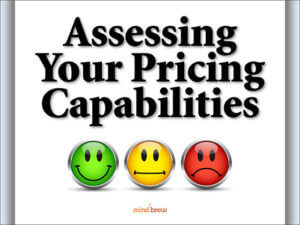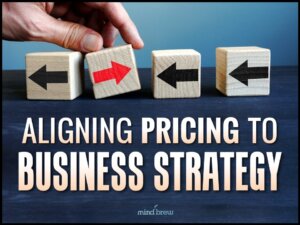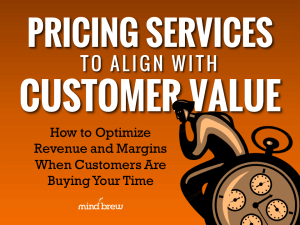As they’re both “pricing” functions in a basic sense, commercial pricing and consumer pricing will naturally share certain fundamental concepts, specialized techniques, and even some of the esoteric lingo and jargon. But because the market and operational dynamics in commercial environments are so dramatically different, effective B2B pricing requires its own unique set of rules and practices.
In the Golden Rules of B2B Pricing training session and research briefing, we explore a number of operational rules and governing principles that have evolved over time among leading teams. In most cases, these rules and principles have been learned the hard way, through some very frustrating and costly trial-and-error. And by sharing the experiences of those who’ve gone before, we hope to help developing groups become more successful, faster, and with less heartburn.
One of the most impactful of the Golden Rules we discuss in the session is about where to find the most significant performance gains:
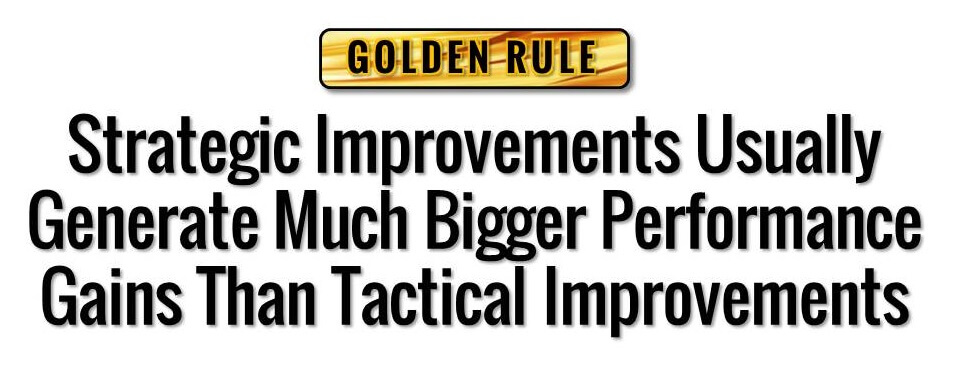
To help conceptualize the massive difference between strategic and tactical improvements, imagine you are manufacturing widgets of some kind. You’ve got various machines in an assembly line performing a bunch of processes to convert the raw materials at one end into finished widgets at the other end.
Tactical improvements are a bit like standing at the end of the assembly line and trying to fix the defective widgets as they drop off the conveyor belt. In sharp contrast, strategic improvements are more like improving the raw materials and tweaking the manufacturing processes so that no defective widgets are being produced in the first place!
In a B2B pricing context, a tactical improvement might be something like streamlining the handling of price exceptions so that turnaround times shrink from three days to one. On the other hand, a strategic improvement in the same vein might involve putting more comprehensive pricing into the quoting tools from the outset, enabling sales reps to accurately price a wider variety of deals themselves, thereby eliminating much of the need for price exceptions and turnaround times altogether.
In this example, both types of improvements are clearly valuable. But in terms of sheer magnitude and breadth of impact, the tactical improvements come nowhere close to what the more strategic improvements would ultimately deliver.
With respect to this particular Golden Rule regarding strategic versus tactical improvements, a session attendee asked a very logical follow-on question:
If these strategic improvements are so much more powerful, why would they have been overlooked thus far? Why would they remain untapped? Why haven’t all of the most powerful strategic improvements already been implemented?
This was an excellent question and here I’ll try to provide two excellent answers…
First off, strategic issues and improvements are more difficult to spot. They’re not nearly as obvious, blatant, or in-your-face as the day-to-day tactical problems and firefights. Strategic deficiencies tend to develop little by little, over long periods of time and can involve a number of contributors across different departments. To identify strategic improvement opportunities, you either have to know exactly what you’re looking for, or you have to employ structured capability assessments and other diagnostic tools and techniques.
Secondly, some people will view strategic improvements as being riskier, fraught with conflict, and well outside of their comfort zones. After all, tackling strategic deficiencies usually involves getting beyond your silo, working with other groups, and influencing their decisions and behaviors without having any direct authority. In the process, you risk stepping on others’ toes or even being accused of meddling. And because leverage works in both directions, a major mistake with a strategic initiative can have much bigger consequences and downsides.
Of course, neither of these explanations is much of a show stopper for Pricing teams that really want to make a difference. But they do explain why I’m very confident in saying that there many strategic improvement opportunities still available to most teams…even those that are very mature and developed.
So…seek and you shall find, dear reader!


